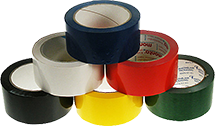Latest blog
18 February 2015
Which protective packaging is best for your business?
Paper vs. polythene, retention packs, inflatable packaging, bubble, polystyrene, foam – there’s a lot of choice when it comes to protective packaging. Making a decision about which option is best for your business can prove confusing.
What should you consider when choosing protective packaging?
- The protective packaging function – cushioning; blocking and bracing; void fill; surface protection; antistatic-properties. What will you be using the protective packaging for? Network Packaging can help you identify which protective packaging will work most effectively for the goods you need to transport
- Manual vs. automated delivery – budget, your current packing area and demand will influence whether you choose a manual solution or something fully automated. Systems can be retrofitted / integrated into existing packing benches or our representitives can suggest new packing workstations that will work with the system you choose
- Environment and sustainability – if you’re looking to make your packaging lines more environmentally friendly and sustainable, this can be an influencing factor in the protective materials you choose and what they’re made from. Paper can be a popular choice, but manufacturers are making strides with biodegradable films and even loose fill products are being made from plant based starches. This means you can make an effective choice and improve your waste liability.
To give you a bit of guidance, the Network Packaging team has put together this handy comparison chart….
| Product | Info & Examples | Pros | Cons | Best for... |
| Paper |  Ranpak’s FillPak series; Storopack’s PAPERplus |
– Can be made from recycled materials- Lightweight and versitile – Easy to dispose of – Range of delivery systems available – from manual through to full automation |
– Can be abbraisive to some surface finishes |
– Void fill- Blocking and bracing – Cushioning products to absorb shock |
| Air bags / Inflatable |  Polythene bags inflated with air via machinery. Storopack’s AIRplus, Sealed Air range, Green Light Products |
– Cost effective consumables- Full automation available – Film can be biodegradable – Consumables are compact / easy to store – Different films / cushioning types provide versatility – Compact systems now available for lower volume users |
– Large hopper systems have high start-up costs- Occasional loss of air retention |
– General void fill, lighter protection- Blocking and bracing – Good for 3PL / ecommerce operations who need fast and efficient on demand service for pick and pack operations |
| Foam Roll |  Rolls of foam available in 1 – 4mm thickness. Standard (white foam) or antistatic (pink foam) options |
– Lightweight- Available in antistatic finishes | – Bulky, harder to store |
– Protecting surface finishes- Products requring antistatic protection (e.g. computer components) – Wrapping products |
| Loose foam chips |  Storopack’s LOOSEfill, Greenlight Eco Flo |
– Lightweight- Easy to use – no training required – Available in biodegradable options |
– Bulky, harder to store- Less favoured by end consumers | – Basic void fill- Cushioning awkwardly shaped objects |
| Bubble wrap |  Sealed Air E200, economy bubble |
– Lightweight- Available in antistatic finishes – Various lengths available. Two bubble sizes available |
– Bulky, harder to store | – Light protection- Wrapping products |
| Instant foam |  Sealed Air’s Instapack, Storopack’s FOAMplus |
– Moulds to product- No product migration – Can be fully automated |
– Hard to recycle- Chemical based – Requires safety equipment to use |
– Cushioning- Absorbing impact |
| Airsac by Network Packaging |  |
– Lightweight- Minimal storage needed (flat before inflation – Recyclable and reusable – Heavier duty film with nylon for air retention – Moulds to product – Can reduce pack size |
– Manual inflation only, automation not yet available |
– Cushioning / Absorbing impact- Fragile and breakable goods – Blocking and bracing |
| Polystyrene |  |
– Lightweight- Can provide insulation – Can be moulded to specific products |
– Hard to recycle- Bulky, harder to store – Less favourable with end users |
– Blocking and bracing- Fragile and breakable goods |
To download a PDF version of our protective packaging comparison table click here.
The above comparison can give you a basic understanding of the varieties of protective packaging available, their uses and what they’re best for. However, if you’d like to discuss your protective packaging needs in more detail, get in touch. We can arrange for a Network Packaging representative to visit you and assess your packaging.
Call us on 01902 496666
Email marketing@networkpack.co.uk, or
Complete our contact form today!












